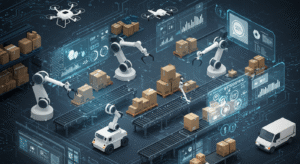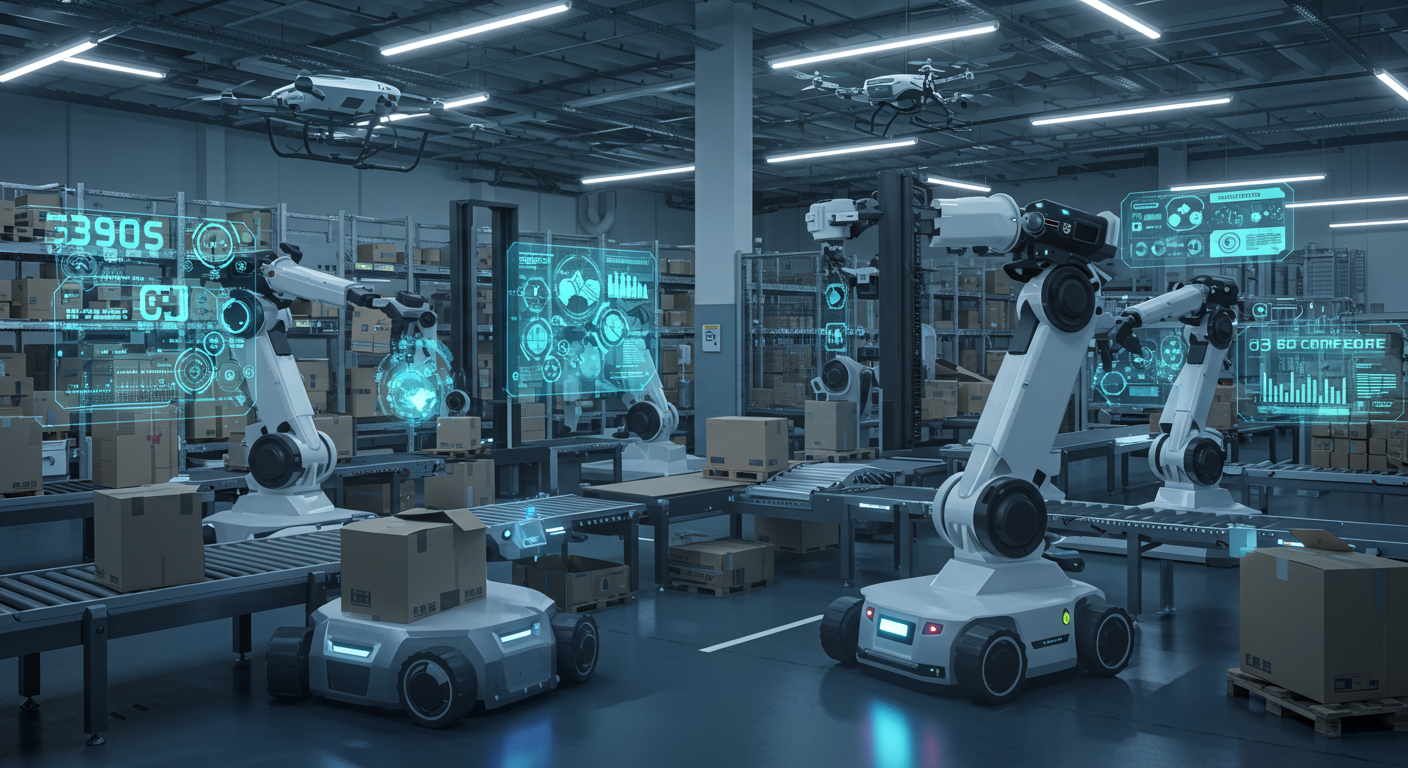The e-commerce industry is undergoing a profound transformation in 2025, driven largely by advancements in robotics and automation. These technologies are revolutionizing how online retailers manage inventory, fulfill orders, engage customers, and deliver products - enabling faster, more accurate, and highly personalized shopping experiences.

The Rise of Robotics and Automation in E-Commerce
Automation is no longer a luxury but a necessity for e-commerce businesses aiming to stay competitive amid growing customer expectations and intense market competition. Robotics and AI-powered systems are streamlining operations from warehouse management to last-mile delivery, reducing costs and enhancing efficiency.
Key Areas Where Robotics and Automation Are Transforming E-Commerce
1. Automated Order Fulfillment and Smart Warehouses
Robotic systems are increasingly deployed in warehouses to automate picking, packing, sorting, and inventory management. AI-powered robots adapt dynamically to fluctuating demand and diverse product assortments, enabling faster and more accurate order processing. Modular, plug-and-play robotic solutions and autonomous guided vehicles (AGVs) optimize warehouse workflows, improving scalability and flexibility.
Micro-fulfillment centers, equipped with robotics and automation, are becoming popular to enable same-day delivery and reduce shipping times1. These smaller, highly automated warehouses located near urban centers help meet consumer demand for speed and convenience.
2. AI-Driven Customer Support and Personalization
Automation extends beyond logistics into customer engagement. AI-powered chatbots provide 24/7 instant support, handling inquiries, returns, and personalized product recommendations. Machine learning algorithms analyze customer behavior to deliver dynamic marketing campaigns and tailored shopping experiences, boosting conversion rates and customer loyalty.
3. Fraud Detection and Data Security Automation
With increasing cyber threats, AI-driven fraud detection systems monitor transactions in real-time to flag suspicious activities and reduce chargebacks. Automation in security protocols helps protect sensitive customer data and maintain trust, a critical factor as data privacy concerns rise.
4. Autonomous Delivery and Last-Mile Logistics
Robotics and automation are reshaping last-mile delivery through autonomous drones and self-driving vehicles. These technologies promise faster, more reliable, and eco-friendly deliveries, especially in urban areas. The drone delivery market alone is projected to grow substantially, reflecting its rising importance in e-commerce logistics.
Benefits of Robotics and Automation in E-Commerce
-
Increased Efficiency: Robotics accelerate warehouse operations, enabling faster order processing and delivery.
-
Improved Accuracy: Automated picking and packing reduce human error, enhancing order accuracy and customer satisfaction.
-
Scalability: Flexible robotic systems adapt to demand fluctuations and seasonal peaks without compromising performance.
-
Cost Reduction: Robotics-as-a-Service (RaaS) models lower upfront costs, making automation accessible to more businesses.
-
Enhanced Customer Experience: Faster deliveries, personalized marketing, and responsive support improve overall satisfaction.
Emerging Trends in Robotics and Automation for E-Commerce in 2025
-
AI-Powered Flexible Robots: Robots equipped with AI can multitask and adapt workflows in real-time, handling diverse warehouse operations efficiently.
-
Modular and Plug & Play Solutions: Easy-to-integrate robotic systems allow quick deployment and scalability.
-
IoT and Wireless Fleet Management: Connected devices and wireless controls optimize robot coordination and warehouse management.
-
Sustainability Focus: Automation supports eco-friendly practices through efficient resource use and reduced carbon footprint in logistics.
-
Composable Commerce: Integration of automation with flexible digital commerce platforms enhances agility and customer responsiveness.
Challenges and Considerations
While robotics and automation offer significant advantages, challenges remain. High initial investments, workforce adaptation, and data privacy concerns require careful management. Businesses must balance technological innovation with ethical AI use and employee training to maximise benefits.
Conclusion
Robotics and automation are reshaping e-commerce in 2025 by enhancing operational efficiency, accuracy, and customer experience. From AI-driven smart warehouses and autonomous delivery to personalised marketing and fraud prevention, these technologies are critical for businesses aiming to thrive in a fast-paced, customer-centric market. Embracing these innovations will be key to meeting rising consumer demands and securing a competitive advantage.

